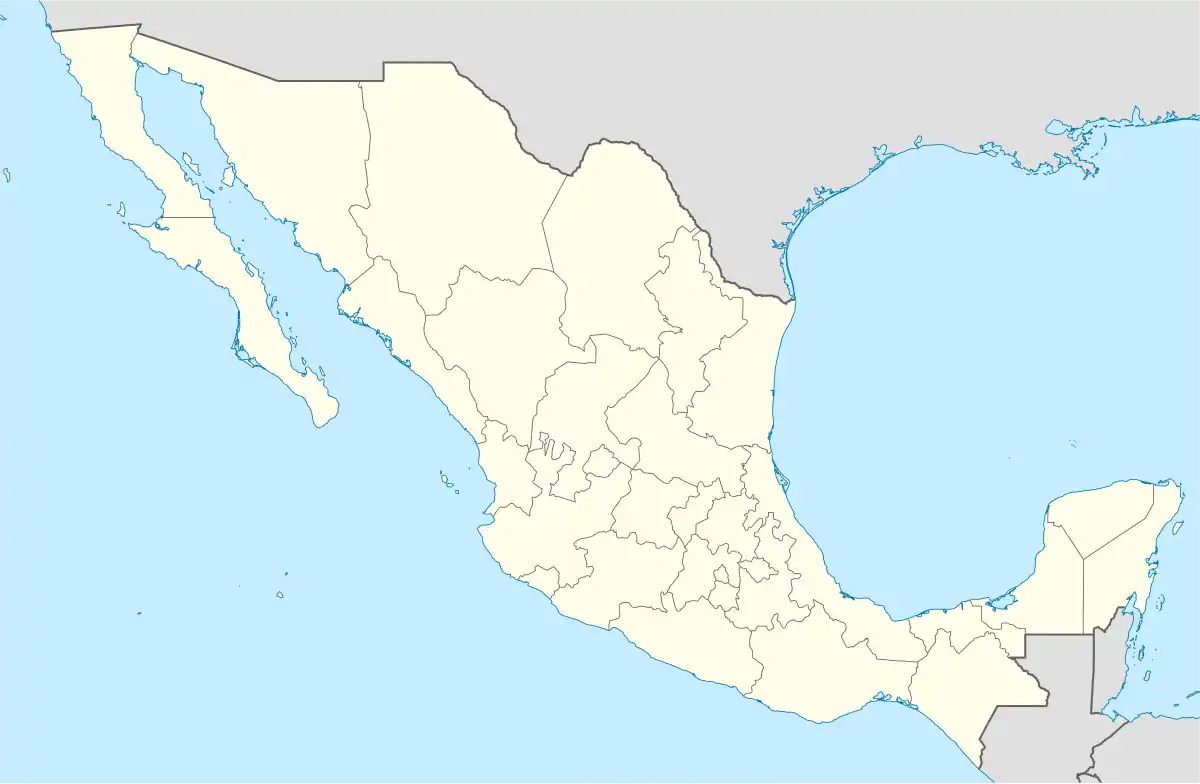San Marcos, Jalisco
San Marcos is a town and municipality, in Jalisco in central-western Mexico. The municipality covers an area of 292.85 km².
San Marcos | |
|---|---|
Municipality and city | |
.png.webp) Location of the municipality in Jalisco | |
 San Marcos Location in Mexico | |
| Coordinates: 20°47′N 104°11′W | |
| Country | |
| State | Jalisco |
| Area | |
| • Total | 292.85 km2 (113.07 sq mi) |
| Population (2005) | |
| • Total | 3,533 |
| Time zone | UTC-6 (Central Standard Time) |
| • Summer (DST) | UTC-5 (Central Daylight Time) |
As of 2005, the municipality had a total population of 3,533.[1]
History
The area now incorporating the settlement of San Marcos was originally called Chistic or Xistic and was originally inhabited by the Toltec tribe under the rule of the Tonallan kings. Francisco Cortés de San Buenaventura arrived followed in 1530 by Nuño de Guzman, and Juan de Escárcena. In 1542 San Marcos was visited by the Viceroy D. Antonio de Mendoza on his way to put down a large indigenous rebellion.
The town itself was founded in Jun 28, 1740, by Fray Antonio de Jesus who was instrumental in construction of the church. As late as 1825 the town had no city hall and was subordinate to Etzatlán Township. The city was officially founded by decree on April 17, 1907, which became effective the following April.
In the early 1900s, during the rule of Mexican dictator Porfirio Diaz, the Mexican government forcibly marched thousands of Yaquis some 200 miles over the mountains from San Blas to San Marcos and its train station.[2] There, the Yaqui survivors were sold at sixty pesos a head to the owners of sugar cane plantations in Oaxaca and the tobacco planters of the Valle Nacional, while thousands more were sold to the henequen plantation owners of the Yucatán.[2] By 1908, at least five thousand Yaqui had been sold into forced slavery.[2][3] Most died within the first year of their captivity.[2]
References
- "San Marcos". Enciclopedia de los Municipios de México. Instituto Nacional para el Federalismo y el Desarrollo Municipal. Retrieved April 16, 2009.
- Turner, John Kenneth, Barbarous Mexico, Chicago: C.F. Kerr & Co. (1910), pp. 43-47
- Spicer, pp. 80-82
